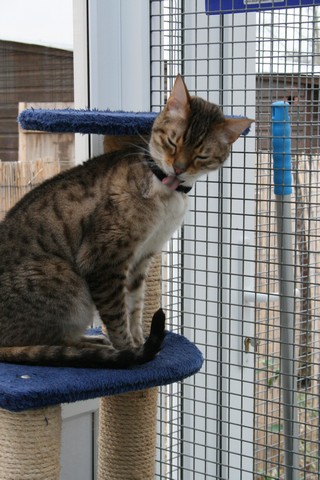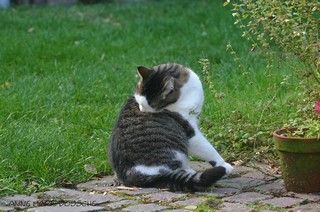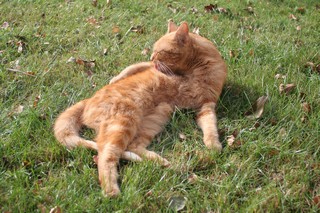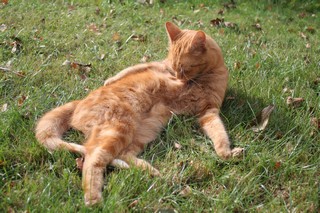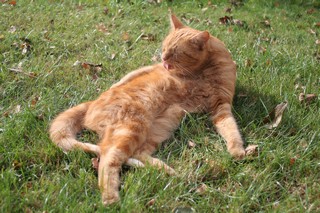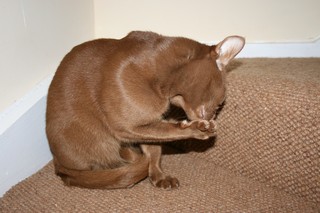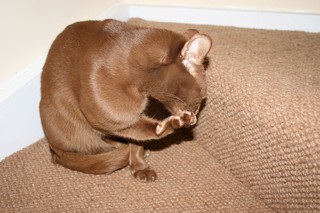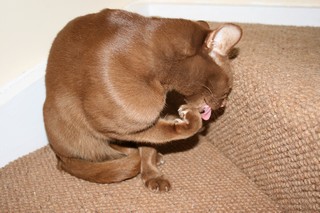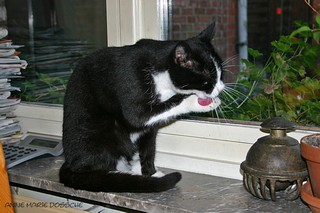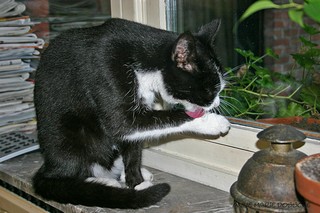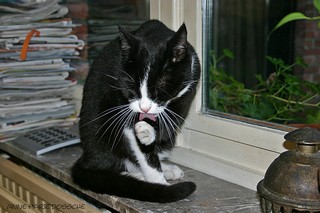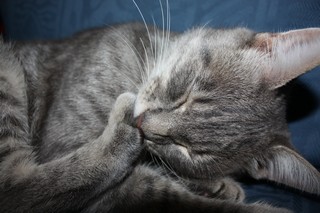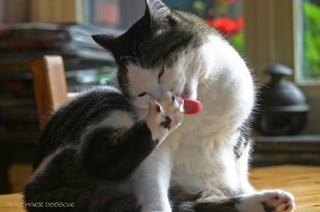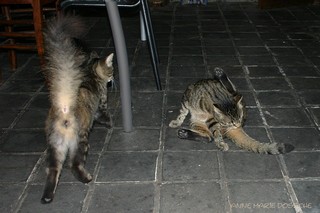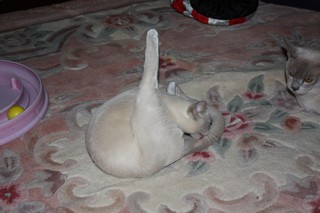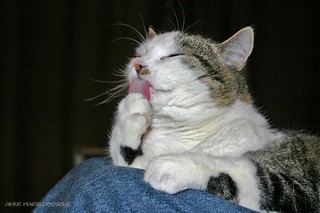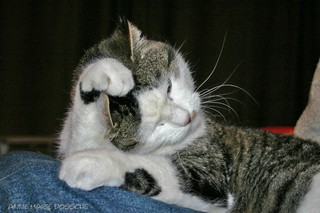Lick/Wash
The cat’s tongue is covered by papillae which are hard, backward curving projections from the tongue’s surface which create a rasp like structure ideal for combing through the fur when grooming. The cat will usually use long lick strokes directed through the hairs, washing them (removing dust and loose debris) by means of saliva. Loose hairs are combed out and may be swallowed. Often the licking actions are interspersed with biting type movements, presumably to remove loose hairs or other items (e.g. dust, dirt, parasites) trapped in the coat. Cats will lick all areas of their bodies. Those areas which cannot be reached, for example, the face, the top of the head and ears, are washed by means of licking the inner and upper surface of the front leg and paw and then using this surface to wipe over the head and/or ears in a direction from back of head to front (i.e. in the direction opposite to that of hair growth).
Characteristic postures may be adopted to wash specific body regions, for example the back is typically licked whilst sitting by extending the neck and turning backwards to either side. The stomach is usually washed whilst lying in dorsal recumbency (on the back) and the anogenital area is typically groomed from a sitting posture where the weight is shifted onto one hip and the opposite hind limb is fully extended and lifted vertically off the ground.
The following two photographs demonstrate sitting to lick the upper body.
The next series of photographs clearly shows how long strokes of the tongue are applied repeatedly over the same area to wash.
The following photographs demonstrate cleaning of the front and back paws.
Cleaning under the tail and on the insides of the back legs requires stretching and balancing.
A demonstration of how the paws can be used to wash areas that cannot be reached by the tongue:

